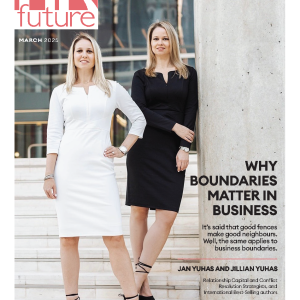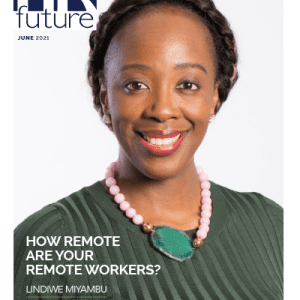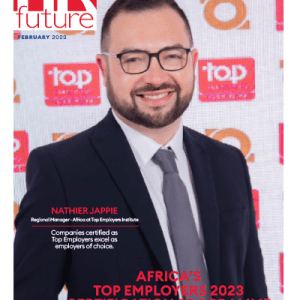In today’s rapidly evolving digital landscape, outsourcing IT support has become a strategic imperative for businesses aiming to enhance efficiency and reduce operational costs. The global IT outsourcing market is projected to reach $591.2 billion by 2025, reflecting the increasing reliance on external expertise. Notably, 70% of companies find outsourcing cost-effective, primarily due to the reduction in expenses associated with hiring and maintaining in-house staff.

Around 45% of businesses report improved service quality as a direct benefit of outsourcing IT functions. This trend underscores a shift towards leveraging specialized external resources to focus on core business operations, access global talent, and achieve scalable growth in an increasingly competitive market
Strategic Trends Shaping IT Outsourcing in 2025
As the IT outsourcing landscape evolves in 2025, several key trends are emerging that IT executives must consider to optimize their outsourcing strategies. We will delve into these trends, providing actionable insights and recommendations for leveraging them effectively.
Investing in Resilience and Redundancy
The lessons of the past five years—from pandemics to cyberattacks to global instability—have made one thing clear: outsourcing must support business continuity, not compromise it. IT executives are now prioritizing partners who can provide geographic redundancy, multi-region support, and rapid failover options.
This includes distributed teams in different countries, cloud-native solutions with built-in disaster recovery, and business continuity planning as a service. Resilience is no longer a contingency plan—it’s a selection criterion.
Tactical Imperatives:
- Evaluate Provider Redundancy: Can your partner maintain SLAs if one region goes offline?
- Map Vendor Risk to Your Critical Systems: Identify which outsourcing dependencies are single points of failure and resolve them.
- Simulate Disruption Scenarios: Conduct tabletop exercises with partners twice a year to evaluate real-time response capability.
Choosing partners with operational resilience built into their delivery models ensures you aren’t trading cost savings for strategic vulnerability.
Emphasis on Data-Driven Decision Making
In 2025, data-driven decision-making (DDDM) has transitioned from a competitive advantage to a business necessity. Organizations are increasingly relying on data analytics to guide strategic decisions, optimize operations, and enhance customer experiences. Outsourcing partners play a pivotal role in this transformation by providing advanced analytics capabilities and insights.
Key Considerations:
- Selecting Analytics-Savvy Partners: Choose outsourcing providers with data analytics expertise to ensure accurate and actionable insights.
- Integrating Data Across Platforms: Ensure seamless integration of data between in-house systems and outsourcing partners to maintain data integrity and accessibility.
- Compliance and Security: Collaborate with partners who adhere to stringent data protection regulations to safeguard sensitive information.
When prioritizing data-driven approaches, organizations can enhance decision-making processes and achieve greater operational efficiency.
Integration of Artificial Intelligence (AI) and Automation
Artificial Intelligence and automation are revolutionizing IT outsourcing by streamlining processes, reducing costs, and enhancing service delivery. Outsourcing providers are increasingly incorporating AI-driven solutions to offer more sophisticated and efficient services.
Key Considerations:
- Identifying Automation Opportunities: Assess which processes can be automated to improve efficiency and reduce manual intervention.
- Partnering with AI-Competient Providers: Engage with outsourcing firms that have demonstrated expertise in implementing AI and automation technologies.
- Continuous Monitoring and Optimization: Establish mechanisms for ongoing evaluation of AI systems to ensure they adapt to changing business needs and environments.
Embracing AI and automation through outsourcing can lead to significant improvements in productivity and innovation.
Focus on Cybersecurity
With the increasing frequency and sophistication of cyber threats, cybersecurity has become a critical focus in IT outsourcing. Ensuring that outsourcing partners maintain security measures is paramount to protecting organizational assets and maintaining customer trust.
Key Considerations:
- Evaluating Security Protocols: Conduct thorough assessments of potential partners’ security frameworks and incident response capabilities.
- Compliance with Regulations: Ensure that outsourcing providers comply with relevant cybersecurity regulations and standards.
- Regular Security Audits: Implement regular audits and assessments to identify and mitigate potential vulnerabilities.
A strong focus on cybersecurity in outsourcing relationships helps safeguard sensitive data and ensures business continuity.

Adoption of Cloud Computing Services
Cloud computing continues to be a foundational element of IT outsourcing, offering scalability, flexibility, and cost-efficiency. Organizations are increasingly leveraging cloud services through outsourcing to enhance their IT infrastructure and capabilities.
Key Considerations:
- Cloud Strategy Alignment: Develop a clear cloud strategy that aligns with business objectives and integrates effectively with outsourcing partners.
- Selecting Experienced Providers: Choose outsourcing firms with proven expertise in cloud technologies and successful implementation histories.
- Data Management and Security: Ensure data management practices and security measures are in place to protect data in the cloud environment.
Leveraging cloud computing through outsourcing enables organizations to remain agile and responsive to market demands.
Nearshoring and Friendshoring
Geopolitical considerations and the need for closer collaboration have led to the rise of nearshoring and friendshoring strategies in IT outsourcing. These approaches involve partnering with firms in geographically and politically aligned regions to mitigate risks and enhance cooperation.
Key Considerations:
- Assessing Geopolitical Stability: Evaluate the political and economic stability of potential nearshore and friendshore locations.
- Cultural and Time Zone Alignment: Consider cultural similarities and time zone compatibilities to facilitate smoother communication and collaboration.
- Infrastructure and Talent Availability: Ensure that the chosen regions have the necessary infrastructure and skilled workforce to meet project requirements.
Adopting nearshoring and friendshoring strategies can lead to more resilient and effective outsourcing partnerships.
Strengthening Outsourcing Governance and Accountability
In 2025, smart outsourcing isn’t just about selecting the right partner—it’s about enforcing the right standards throughout the lifecycle of the engagement. Governance structures must be explicit, performance-based, and tied to measurable outcomes.
A growing number of IT leaders now include continuous performance benchmarking, tiered SLAs, and escalation protocols as mandatory components in outsourcing contracts. This shift ensures that vendor relationships are not passive but actively managed with clear mutual accountability.
Key Actions for IT Executives:
- Define Tiered SLA Metrics: Move beyond uptime guarantees. Include metrics for speed, quality, innovation delivery, and proactive issue resolution.
- Audit Third-Party Risk: Regularly review your partner’s sub-contractors and data handling procedures, not just their promises.
- Enforce Continuous Improvement: Include clauses that require quarterly innovation presentations or process optimization proposals from providers.
This governance-forward approach doesn’t just protect against failure—it actively extracts more value from the relationship and positions IT as a driver of continuous business evolution.

Endnote
Looking ahead, the future of IT outsourcing will increasingly rely on ecosystems rather than isolated vendor relationships. As multi-vendor collaboration platforms and shared outcome-based contracts emerge, businesses will need to rethink how value, responsibility, and innovation are distributed.
Forward-thinking IT executives must prepare not just for outsourcing partnerships, but for interconnected alliances that reshape the digital enterprise landscape.
Guest writer
















































































